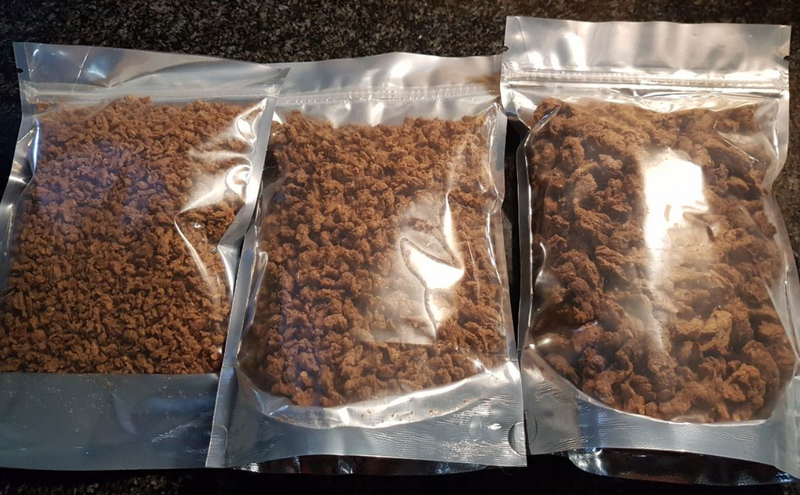Back to search (Gauteng > Johannesburg > Community > Find Community Needs> ad 1212075236)
Soya Mince and Chunks 10Kg bag
R 500

Reason for Reporting
TEXTURE VEGETABLE/SOYA PROTEIN TVP/TSP
HOW IS MADE
TVP is made from high (50%) soy protein soy flour or concentrate, but can also be made from cotton seeds, wheat, and oats. It is extruded into various shapes (chunks, flakes, nuggets, grains, and strips) and sizes, exiting the nozzle while still hot and expanding as it does so.
The defatted thermoplastic proteins are heated to 150-200°C, which denatures them into a fibrous, insoluble, porous network that can soak up as much as three times its weight in liquids. As the pressurized molten protein mixture exits the extruder, the sudden drop in pressure causes rapid expansion into a puffy solid that is then dried. As much as 50% protein when dry, TVP can be rehydrated at a 2:1 ratio, which drops the percentage of protein to an approximation of ground meat at 16%. High-quality TVP can be mixed with ground meat to a ratio of up to 1:3 (rehydrated TVP to meat) without reducing the quality of the final product, sometimes improving it if the meat used is poor. TVP is primarily used as a meat substitute due to its very low cost at less than a third of the price of ground beef, and when cooked together will help retain more weight from the meat by absorbing juices normally lost.
Properties
TVP can be made from soy flour or concentrate, containing 50% and 70% soy protein respectively, and is relatively flavourless. Both require rehydration before use, sometimes with flavouring added in the same step. TVP is extruded, causing a change in the structure of the soy protein which results in a fibrous spongy matrix that is similar in texture to meat. In its dehydrated form, TVP has a shelf life of longer than a year but will spoil within several days after being hydrated. In its flaked form TVP can be used similarly to ground meat.
Uses
Textured vegetable protein is a versatile substance, with different forms allowing it to take on the texture of whatever ground meat it is substituting. Using textured vegetable protein, one can make vegetarian or vegan versions of traditional meat dishes such as chilli, spaghetti Bolognese, sloppy joes, tacos, burgers, or burritos.
Soy protein TVP can also be used as a low-cost/high-nutrition extender in comminuted meat and poultry products, and in tuna fish salads. Foodservice, retail and institutional (primarily school lunch and correctional) facilities regularly use such "extended" products. Extension may result in diminished flavor, but fat and cholesterol are reduced.
Textured vegetable protein can be found in natural food stores and larger supermarkets, usually in the bulk section. TVP is also very lightweight and is often used in backpacking recipes.
TVP is often used in prisons and schools because of its relatively low cost, high protein content and long shelf life.
Read More






